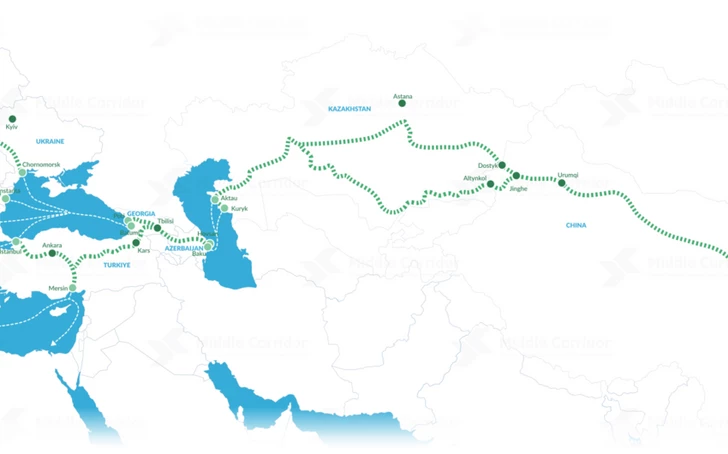BAKU, July 25, 2025 — The Middle Corridor, also known as the Trans-Caspian International Transport Route (TITR), is increasingly reinforcing Azerbaijan’s status as a key link in Eurasian logistics, according to a new analytical report prepared as part of a project by Uzbekistan’s Ministry of Transport.
The report highlights Azerbaijan’s strategic importance, citing its modern transport infrastructure—including Caspian Sea ports—and strong connectivity with Georgia and Turkey, two other vital players along the corridor.
The Azerbaijan-Turkey partnership receives special emphasis, as the two countries frequently act in concert on geopolitical and geoeconomic initiatives. This alignment is drawing growing interest from Western powers seeking to deepen ties with Central Asia amid sanctions against Russia and Iran.
Since gaining independence, Azerbaijan has pursued a consistent policy of developing its transportation sector with the aim of becoming a major international hub. In this context, both the Middle Corridor and the North-South corridor are considered of strategic importance.
“Azerbaijan sees the TITR not just as infrastructure, but as part of the ‘economy of the future’ and a gateway for exporting national products. One example was the railway shipment from Baku to Xi’an in November 2024,” the report notes.
For Kazakhstan, the Middle Corridor also serves as a geopolitical tool to integrate into global supply chains, strengthen relations with the European Union and Turkey, and expand its role in China’s Belt and Road Initiative. The corridor’s growth enables Astana to diversify its external economic ties and deepen engagement with the Turkic world, Europe, and the Asia-Pacific region.
The report also stresses the corridor’s importance for enhancing regional connectivity across Central Asia. Infrastructure upgrades along the route are improving transport synchronization and integration among participating countries.
Both the United States and the European Union view the development of the Middle Corridor as a way to reduce dependence on traditional transit routes through Russia. Meanwhile, China sees TITR as a more resilient and geopolitically safer alternative for cargo transit amid the ongoing war in Ukraine.
“In a time of global instability, the Middle Corridor offers a safer and more profitable route—not just for Beijing under the Belt and Road Initiative, but also for Moscow,” the report states. “Partnership between China and Russia could further the development of Eurasian transport infrastructure and regional integration.”
Tajikistan, too, is eyeing the corridor as a path to access European markets with exports of precious metals, textiles, and construction materials. The report notes that Dushanbe has elevated its relationship with Baku to a strategic partnership in response to the corridor’s growing relevance.
In 2024, freight volume along the TITR grew by 62%, reaching 4.5 million tons. That number is expected to increase to 5.2 million tons in 2025, with 4.2 million tons transiting through member states. Of this, 2.5 million tons will be dry cargo (96,000 TEU equivalent), and 1.7 million tons oil.
By 2027, the corridor’s annual capacity could reach 10 million tons, providing a solid foundation for expanding Azerbaijan’s transit potential and attracting further investment into its infrastructure.




